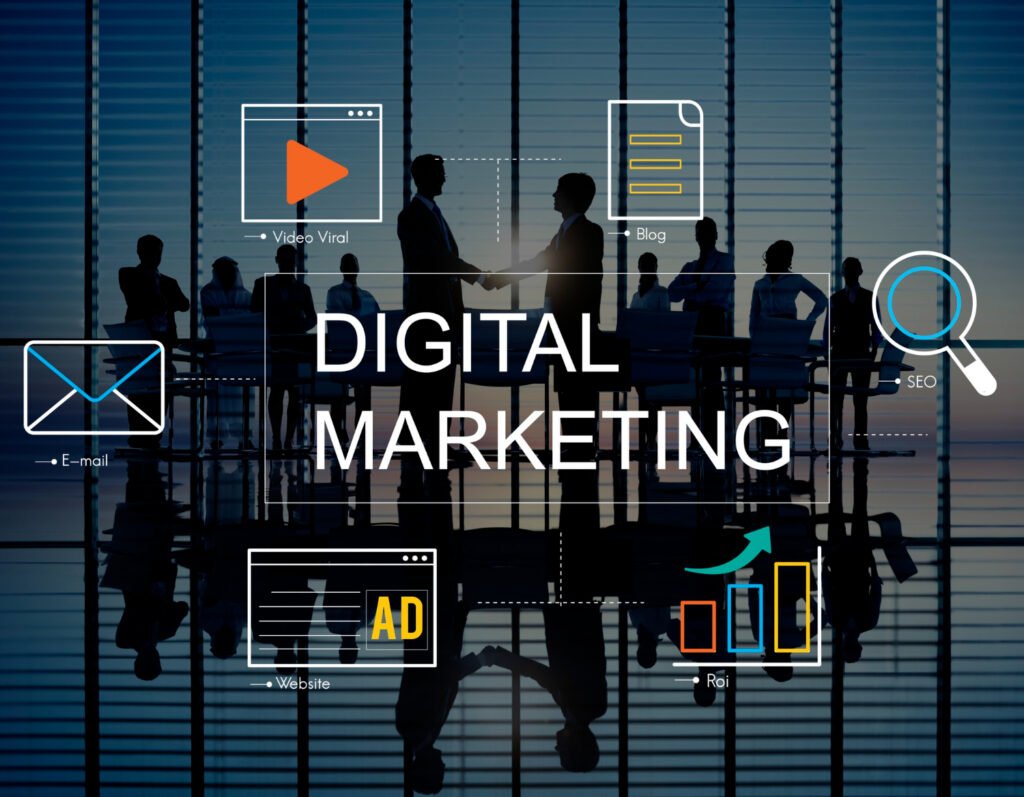7 Proven Digital Marketing Strategies to Boost Your Business
Why do some businesses thrive online while others fade into obscurity? The answer often lies in digital marketing. In today’s fast paced marketplace, having a strong digital presence is no longer optional, it’s essential. Digital marketing gives businesses the tools to reach more customers, build trust, and compete on a global scale. In fact, HubSpot reports that over 60% of marketers say digital channels generate the highest-quality leads. That’s proof that ignoring digital marketing means missing out on growth opportunities. At its core, digital marketing is the most cost-effective way to scale a business, whether you’re a startup or a large enterprise. This guide will show you how to harness its power step by step and boost your business with strategies that actually work. What Is Digital Marketing? What does it really mean when we talk about digital marketing? At its core, digital marketing is the use of online channels such as search engines, social media, email, and websites to promote a business and connect with potential customers. Unlike traditional marketing, which relies on tools like billboards, print ads, or TV commercials, digital marketing takes place where people now spend most of their time online. While traditional methods cast a wide net with limited targeting, digital marketing allows businesses to reach specific audiences with precision and measurable results. This shift matters because the modern customer journey begins long before a purchase. Consumers research products on Google, compare brands on social media, and read reviews before deciding who to trust. A strong digital presence ensures that your business shows up at every step of that journey, guiding prospects toward becoming loyal customers. Now that we understand what digital marketing is, let’s explore why it has become the driving force behind business growth in today’s economy. Why Digital Marketing Matters for Business Growth How do some businesses manage to attract customers far beyond their local reach while others struggle to get noticed? The answer often lies in the power of digital marketing. It allows companies to expand their presence beyond geographic boundaries and connect with a highly targeted audience that is already interested in what they offer. Unlike traditional advertising, which can be costly and uncertain, digital marketing is remarkably cost-effective. A small business can run a focused social media ad campaign for a fraction of what a print or TV ad would cost, all while reaching people who are more likely to convert. Another key advantage is measurability. With tools like Google Analytics and social media insights, businesses can track clicks, conversions, and customer behavior in real time. These insights make it easier to refine strategies, reduce wasted spending, and maximize return on investment. Most importantly, digital marketing builds authority and trust. Consistently sharing valuable content, engaging with audiences, and appearing in search results positions your brand as credible. Over time, this trust translates into loyalty and loyal customers are the backbone of sustainable growth. With these benefits in mind, the next step is to look at the core strategies that make digital marketing such a powerful driver of business success. Core Strategies to Boost Your Business with Digital Marketing Search Engine Optimization (SEO) Have you ever asked yourself why some businesses consistently show up on Google’s first page while others remain buried in the search results? The difference is often in how effectively they use Search Engine Optimization (SEO). Done right, SEO makes your business discoverable to the very people searching for your products or services. On-page SEO focuses on what’s within your control of your website. This includes optimizing content with the right keywords, crafting clear titles and meta descriptions, and structuring your site so both users and search engines can navigate it easily. Strong on-page SEO ensures your website speaks the same language as your audience. Off-page SEO, on the other hand, is all about building authority beyond your website. Backlinks from reputable sources act as votes of confidence, signaling to search engines that your brand is trustworthy. Guest posts, digital PR, and strategic partnerships all help strengthen this credibility. For businesses serving local customers, Local SEO is a game changer. Optimizing your Google Business Profile, encouraging customer reviews, and targeting location based keywords ensures that when someone nearby searches for your service, your business shows up first. Together, these three aspects of SEO create a powerful foundation that drives visibility, traffic, and growth. But ranking higher is only the beginning; the real challenge lies in keeping your audience engaged. Content Marketing What makes people stop scrolling and notice your business? More often than not, it’s content that speaks directly to their needs. Content marketing is the practice of creating blogs, videos, infographics, and podcasts that inform, inspire, and engage. Valuable content does more than fill space; it attracts the right audience. A blog post can answer a pressing question, while a video tutorial can show how your product solves a problem. By offering consistent value, you guide prospects from interest to conversion. Facts alone aren’t enough. Storytelling gives your content emotional impact. Sharing customer success stories, your brand’s journey, or the “why” behind what you do builds authenticity. When people connect with your story, they trust your brand and trust drives loyalty. With great content in place, the next step is to share it where your audience already spends time. Social Media Marketing Why do some brands dominate your feed while others go unnoticed? The secret is smart social media marketing. Platforms like Facebook, Instagram, LinkedIn, and TikTok give businesses a direct line to billions of users, each with unique ways to connect and engage. There are two main paths to growth: organic and paid. Organic growth comes from posting valuable content, using hashtags, and engaging with followers. Paid ads, on the other hand, allow you to target specific audiences with precision, driving faster results and higher conversions. But success isn’t just about likes or clicks it’s about building community. By responding to comments, creating conversations, and showing authenticity, you turn followers into advocates. A strong




